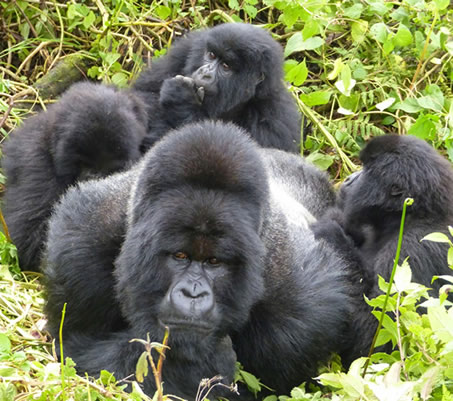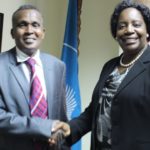Mountain gorilla tourism has contributed billions to the Ugandan economy, helping spur development in the Kigezi sub-region in the south-western part of the country on the border with Rwanda.
Official records show that more than 18,000 gorilla permits are sold annually, with each permit costing Shs2.16 million (US$600), translating into an annual collection of more Shs38 billion.
According to John Justice Tibesigwa, the Bwindi and Mgahinga National Park Acting Conservation Area Manager, mountain gorilla tourism started in 1961 when the area was still a sanctuary.
Tourism, Tibesigwa said, has also enabled the Uganda Wildlife Authority (UWA) to contribute Shs900 million annually to communities around Bwindi-Mgahinga for development projects.
The Bwindi-Mgahinga area has more than 14 gorilla groups and only eight tourists are allowed to visit a gorilla group per day. As of September 2016, the estimated number of mountain gorillas remaining in the world was about 880, with Uganda owning more than half of the primates.
This, as a result, has attracted tourists in the area and has had a spillover effect in terms of service development, especially in hotel and hospitality and the transport sector.
More than 100 hotels and camp sites have been established and provide employment to more than 10,000 people.
Hotels such as Accadia Cottages, Bunyonyi Overland Resort Camp, Entusi, Bushara and Sharp Island Gorilla Lodge, among others are a good addition to the Kigezi tourism.
In the transport sector, an airstrip has been established in Kihiihi, Kanungu District and another is under construction in Rubanda District. The two will be an addition to the already existing Kisoro Airfield.
“Tarmacking Kabale- Kisoro road has also facilitated development. However, government should improve internet connectivity, provide electricity, especially in the national parks,” Ivan Mbabazi Batuma, a member of the Kigezi Tourism Cluster, says.
Other tourism features such as Lake Bunyonyi, Mt Muhavura, and Queen Elizabeth National Park, Batuma says, should be promoted to create alternatives as well as establishing a special desk at border points to handle tourists.
Nicholas Byengoma, the vice chairperson of the Kigezi Tourism Cluster, says whereas government has injected billions of Ugandan shillings into the tourism sector, more needs to be done.
“Encourage the establishment of domestic air transport to ease movement, especially for tourists visiting different destinations,” he says.
Tourism, as already stated, employs more than 10,000 people in the Kigezi sub-region and this, according to Seith Byarugaba, an investor in accommodation, is a big achievement that government should leverage on.
“There is need to habituate other animal species such as chimpanzees, red monkey and birds to diversify,” he says.
Government, Fideli Kanyamunyu, the director of Wagtail Tourism Investments in Kisoro District, believes should return much more to local communities instead of the current 20 per cent.
“… giving us only 20 per cent of the entrance fees, which is only US$40 out of the US$600 should be revised,” he says and appeals to government to consider giving soft loans to community members to improve the quality of their products.
But beyond looking at government, Akankwasa Barirega, the Acting Commissioner for Wildlife Conservation at the Ministry of Tourism and Antiquties, advises local communities and members in the Kigezi Tourism Cluster to be more innovative, especially in regard to creating tourism amenities.
For instance, he says, people should think of establishing facilities such house boats on Lake Bunyonyi, zip lines crossing the interlocking hills, cable cars on Mt Muhavura and hot air balloons, among others.
“You earn a lot because there is a ready market [tourists],” he says.
Silver Baguma, the Vice Chairman of Rubanda District, thinks that stakeholders meetings such as the one held recently, provide good engagement.
However, he argues, for employment opportunities, residents must be given priority consideration.








